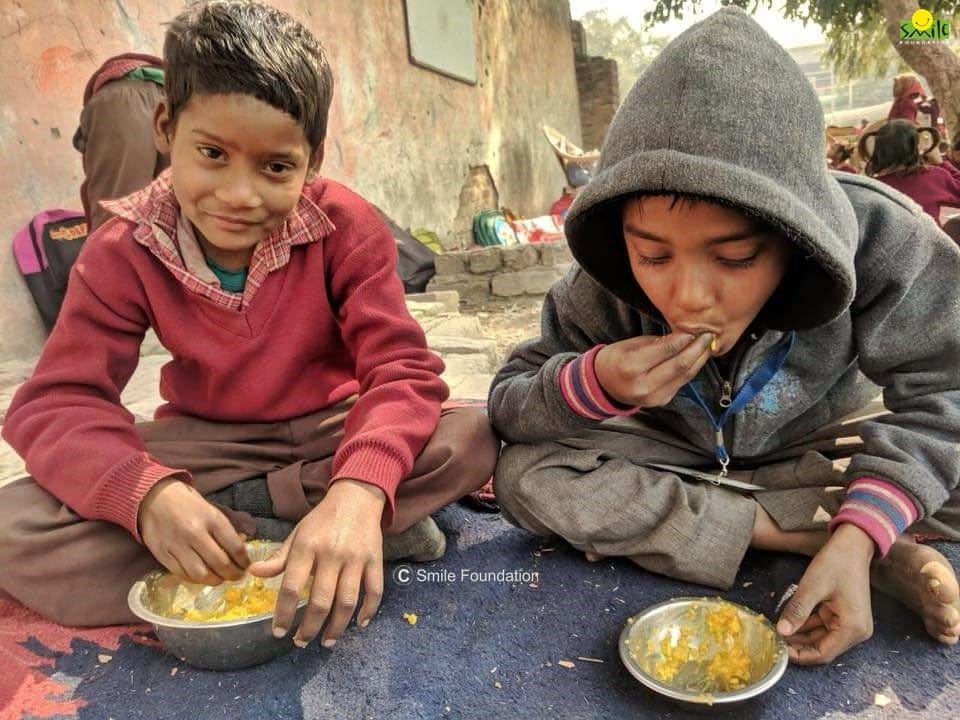
food security and long-term nutrition are critical for human capital development and generating demographic dividends. Better practices are essential for long-term success. Food is proving to be crucial as leaders plan for demographic transition, from youth to senior citizens. Food security and nutrition foster excellent health for all generations and improve well-being and productivity. Thus, nutrition and demographic dividend are linked. Food security and nutrition are necessary for optimum health, human development, and eventually, economic progress.
The problem of nutrition in India
India has seen significant economic improvement in the past few decades. Despite this, many children under the age of five are overlooked, with 38% stunted and 35% underweight. Furthermore, approximately half of all women are anaemic. We’re also behind on important nutrition-specific and sensitive interventions like exclusive breastfeeding and micronutrient supplementation. Undoubtedly, malnutrition is a serious development issue.
Ways to fight malnutrition
The Integrated Child Development Services (ICDS) Scheme was launched in 1975 as the first pan-India organisational reaction. It was meant to strengthen the nutrition and health status of children under the age of six. Health and education convergence through Anganwadi centres (AWC) in villages and urban slums as part of the initiative. The initiative has already been extended to about 14 lakh AWCs and mini AWCs. This covers more than half of all children under the age of six. There is widespread agreement that malnutrition is a major cause of death in roughly 40% of under-five children. In 1993, the National Nutrition Policy was developed for eliminating malnutrition and attaining adequate nutrition status for all. This policy was formulated by the Women and Child Development (WCD) Ministry.
Efforts were underway to combat malnutrition in adolescent girls. Inter-generational variables that contribute to low birth weight and a young marriage age for girls contribute to this. Unfortunately, the scheme was not able to meet the set targets. This is because expected integration or convergence was weak, leakages were common, and the community was primarily seen as oatmeal distribution (daliya banto) centres.
The link between nutrition and demographic dividend
India’s population is youthful, and the country is well-positioned to take advantage of this window of opportunity. According to a World Bank policy research report, over two-thirds of the employed population in India earn 13 per cent less than other working-class people due to childhood stunting—being extremely short for their age—one of the world’s greatest such losses in per capita income.
Children with stunted growth face negative consequences later in life: decreased brain development leads to weaker cognitive skills and reduced educational attainment. To tackle these issues, the National Nutrition Mission (NNM) provides an integrated policy and programme framework. The mission lays out specific goals for reducing underweight, stunting, low birth weight, and anaemia in women. It also has specific targets, such as a 2% reduction in stunting, and underweight and a 3% reduction in anaemia in women. Initial findings are encouraging: according to certain media reports citing official sources, stunting rates have dropped to 34.7 per cent.
Direct cash transfers have been shown to be helpful in increasing healthy behaviours both globally and domestically. They have been shown to boost nutritional results in Bihar. Sadly, policy commitment in this area is a bit hazy. Moreover, the mission makes no mention of how extremely malnourished children would be cared for. This, despite the fact that the numbers are enormous. In terms of the number of empty beds, the current capacity for treatment through Nutritional Rehabilitation Centres in public systems is severely limited. A programmatic focus on community-based management of severe malnutrition is necessary. Private sector engagement can be considered in this context by utilizing innovative demand-side financing instruments such as vouchers.
Can better nutrition improve demographic dividend?
There is a real possibility to harness the benefits of the demographic shift in countries like India. This is because here the working-age population is significantly bigger than the number of elderly and young dependents. When this beneficial age structure is combined with significant investments in the health and employment of young and working-age individuals, demographic dividends accrue. Overall this enhances overall productivity and economic growth. A second demographic dividend can also boost economic growth when older people have the health and income to invest in the youth of today. Demographic dividends aren’t always automatic; they rely on smart investments and policies to ensure that people reach their full potential.